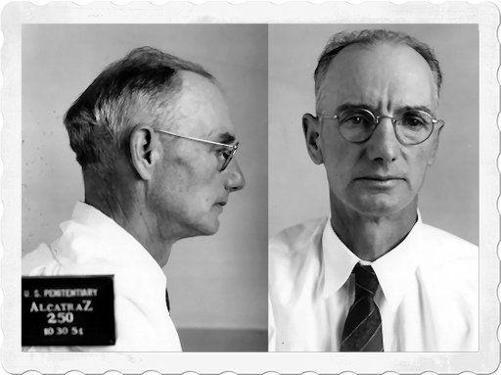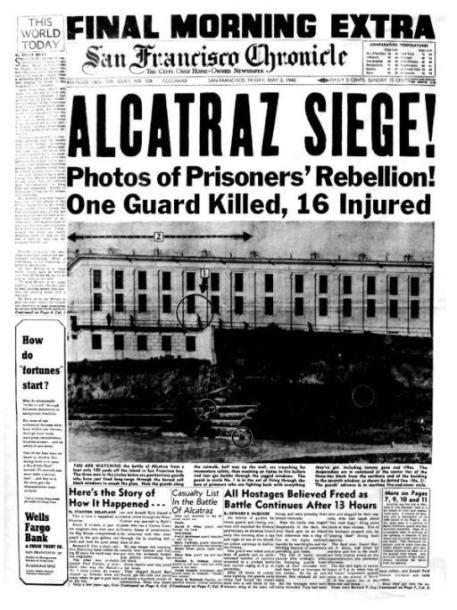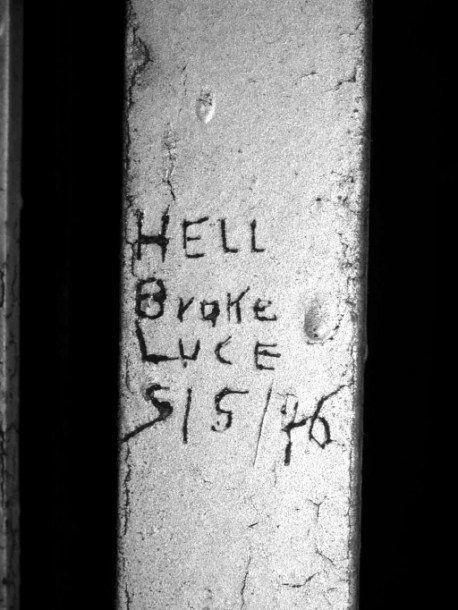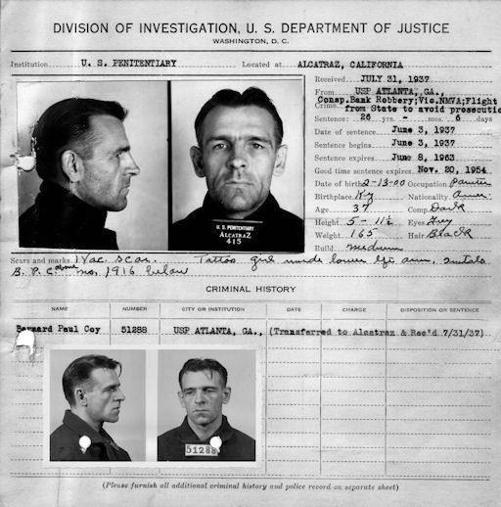One navy blue pouch containing two glass cases, one case containing subject’s silver rimmed glasses, the other containing a white powder believed to be stomach powder.
One handkerchief, brown striped border.
One small memo book approximately three by five inches, contents blank.
One small piece of white cloth.
One U.S. Army official dog tag in the name GEORGE F. TODD, #38409746 T43.
One enlisted man’s temporary pass issued in the name of TODD dated 0730 July 31 to 0730 August 2, ’45 “to visit Bay Area”. The above described tag and pass were used by subject in an ineffectual attempt to elude detection at Fort McDowell.
One white cloth pouch containing U.S. Army dog tag in the name of ARTHUR L. WADE #34506347 T43, Army dog tag in the name of ERNEST D. BENNETT, #33573388, one broken tube Barbasol shaving cream containing $1.38 in change.
One Pall Mall cigarette package containing seven assorted shoulder patches, U.S. Army, two chevrons U.S. Army Staff Sergeant, one new U.S. Army Air Corps shoulder patch wrapped in tissue paper.
Four undated enlisted men’s temporary passes in the name of A.L. WADE, Staff Sergeant, #34506347, Hq. Btry. A 256 AAA, granting permission to visit Bay Area.
Six blank enlisted men’s passes.
Three blank temporary passes bearing the stamped signature of WILLIAM B. BURCH.
One fountain pen, gold colored.
One gray flashlight marked “USM” containing two Every-Ready batteries marked for use before June, 1944.
One small cardboard box containing blank furlough paper form #31, War Department,... G.O.
One metal Bayer Aspirin box containing sixty cents in assorted change and several strands of what appears to be human hair.
One small Colgate toothpaste tube painted green containing a brown substance believed to be glue.
One seed envelope containing unidentified white powder.
One Army tie.
One pair regulation Army socks.
One traced insignia of Pacific Coast Frontier Defense Sector.
One small cardboard box containing two wooden objects both carved in the shape of a “U” approximately one inch in length, covered with waxlike substance.
One small tin box containing piece of broken mirror.
One small medicine bottle containing ink.
One small cardboard box containing razor, fourteen cents in change, one pen point and three taped balls containing change.
One Dennison label box containing unidentified white powder, and five safety pins.
One small wooden cylinder (pencil lead holder) containing three wooden matches each tightly wrapped with small needle and tan thread.
One small bar green soap.
I should like, at this time, to express my appreciation to you for the assistance rendered Special Agents HARTLEY and CROW during the investigation of this matter.
Very truly yours,
N. J. L. PIEPER
Special Agent in Charge
Over the course of nearly ten years, Giles had acquired more than forty smuggled articles ranging from clothing to dog tags. Giles was punished harshly and he would remain in segregation for nearly three years. In 1948, he was integrated back into the general population and assigned the incinerator detail; considered one of the island’s toughest work assignments. He was eventually transferred to Leavenworth and paroled several years later. Upon his release, Giles moved to Los Angeles to live with his brother and never returned to prison. John Giles died in February of 1979 at age eighty-four.

ESCAPE ATTEMPT #10
Date:
May 2-6, 1946
Inmates:
Bernard Coy
Joseph Cretzer
Marvin Hubbard
Miran Thompson
Clarence Carnes
Sam Shockley
Location:
Main Cellhouse
THE BATTLE OF ALCATRAZ


A message scratched onto one of the flat bars of cell #23 in A Block, where several inmates were temporarily housed during the “Battle of Alcatraz.”
On May 2, 1946, six convicts embarked on one of the most violent escape attempts ever made on the Rock. Many historians rank this as the most significant event in the island’s twenty-nine-year history as a Federal penitentiary, and it was appropriately labeled by the contemporary press as the “Battle of Alcatraz.” Of the thirty-nine convicts who attempted to escape over the years, only one successfully plotted and executed a plan to secure weapons – and they were used with deadly consequences. In the wake of the conflict, two correctional officers and three inmates lay dead from bullet wounds and several others were left seriously injured. This legendary escape attempt would remain a topic of discussion by inmates and guards alike until the prison’s closure in 1963.
THE CONSPIRATORS
Bernard Paul Coy

Bernard Paul Coy was the primary architect of one of the most ingenious escape plots ever implemented at Alcatraz. He would be the only inmate in the prison’s history to successfully secure prison firearms.
Forty-six-year-old Bernard Paul Coy was a hillbilly bank robber serving out the remainder of a twenty-five-year sentence on The Rock. Bernie was born to a hauntingly poor Kentucky hill family of one brother and four sisters, all of whom suffered the consequences of extreme poverty. By the time Bernie reached his late teens, his teeth were horribly decayed and he was afflicted with excruciatingly painful gums. It was rumored that Coy had been neglected as a child and had received frequent beatings from his father. Even in his earliest years, Coy had allegedly exhibited violent tendencies.
At sixteen years of age, Bernie decided to leave home and enlist in the U.S. Army. It was in this context that he would enter into his first battle: World War I. Coy served in the Army with great distinction until the war ended in 1918. After finishing his tour of duty, he fell in love with a woman from Wisconsin and the couple soon married. In order to maintain a steady income, Bernie reenlisted in the Army in 1920. As the war effort came to a close, Coy frequently found himself in trouble and it was during this period that he changed the direction of his life, and began moving toward his eventual destiny. In 1921, Bernie was arraigned in Chicago for abandoning his post assignment and going AWOL. He was found guilty of desertion and was sent back to Camp Taylor in Kentucky, where he served fifteen days in the military detention center. Soon afterward, he received a dishonorable discharge and therefore had to make the transition back to civilian life with few job opportunities and limited prospects.
Coy feverishly attempted to find work, in hopes of making a decent life for himself and his wife. He was a gifted craftsman and artist, and made use of his talents as a decorator and painter. However, despite his earnest attempts, the Great Depression had left him unemployed and desperate to support himself. Bernie found himself backed into a corner with few options left by which to survive. In 1923 Coy was arrested in Draper, Wisconsin, for violating liquor laws along with an assault and battery charge. He was released with time served and fined $250, which he clearly could not afford to pay in his state of unemployment. He was convicted of larceny charges in 1928 and 1930, and eventually served nearly five years in the Wisconsin State Penitentiary.